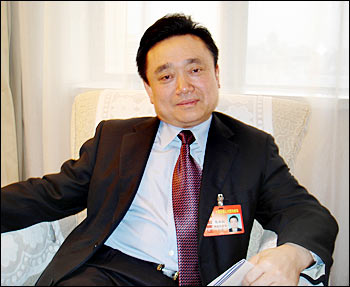| Tools: Save | Print | E-mail | Most Read |
| Driving C. China Development |
| Adjust font size: |
Promoting balanced regional development is one of the pillars of China's 11th Five-Year Development Guidelines (2006-2010) currently being deliberated by lawmakers attending the Fourth Plenary Session of the 10th National People's Congress (NPC) that began on March 5 in Beijing. East China leads the way in terms of national development. Its advantageous location and preferential policies have made it the most prosperous part of China since reform and opening-up policies were implemented in 1979. Over the years, other areas were also arrowed for development. Programs to kick-start development in the western regions were initiated in 1999. Likewise the campaign to rejuvenate the northeast was launched in 2003. This has left the central region a little behind. The central region, including Hunan, Hubei, Henan, Anhui, Jiangxi and Shanxi provinces, is home to Chinese civilization, and has one quarter of the country's population. "Achieving a coordinated and balanced development on a regional basis is an important strategy for the central government, while an emphasis on developing the central region presents an opportunity for Hunan to boost efforts in this respect," Chen Shuhong, director of Hunan Provincial Development and Reform Commission told china.org.cn on the sidelines of the NPC session.
Hunan, a province with a population of 67 million, reported a gross domestic product (GDP) of 647.3 billion yuan (US$80.54 billion) last year, ranking it 13th among 31 provinces, municipalities and autonomous regions (excluding Hong Kong, Macao and Taiwan). "Hunan's development outline was designed according to local conditions and in consultation with the National Development and Reform Commission (NDRC). It forms a part of the 11th Five-Year Development Guidelines," Chen said. Table: Main targets set by Hunan in its 11th Five-Year Development Guidelines
Like other central China provinces, industrialization is Hunan's main target, but priority will be given to certain local industrial strengths. Hunan's 10 pillar industries include modern equipment manufacturing, steel, information technology, biotech, pharmaceuticals, new material, food processing, papermaking and chemicals manufacturing. In addition, the tourism and cultural industries are two of the province's more important industries to be promoted. Huge investments in infrastructure construction will continue because the inland region is still lacking in key infrastructure including electricity, water and roads. "To lay a solid foundation for future development, our total infrastructure investment over the next five years might amount to 1.65 trillion yuan (US$205.3 billion) or even more," Chen said. Incidentally, this figure is twice that of accumulated fixed assets investments made during the past five years. To raise enough funds, Chen noted that the province will work toward gaining more fiscal support from the central government, banks, and domestic and foreign private investors. Over the last five years, the province managed to attract a total of US$8.3 billion in foreign investment and 177.8 billion yuan (US$22.1 billion) in domestic funds. However, Chen said the province hopes to welcome more transnational companies (TNCs) and the larger, better known domestic enterprises. He added that local enterprises will be encouraged to participate in the economic integration of the pan-Pearl River and pan-Yangtze River deltas. "Such an integration would bring increased business opportunities, and enhance competition," he said. In particular, Hunan hopes to ride on the back of adjoining Guangdong Province to attract more export-oriented processing projects. "Hunan will implement an all-around opening-up policy to accelerate its development and maintain contact with the country's major economic zones in a bid to narrow the development gap," Chen added. Backgrounder: 1980s June 1999 August 2003 (China.org.cn by staff reporter Tang Fuchun, March 7, 2006) |
| Tools: Save | Print | E-mail | Most Read |
 |
| Related Stories |
|
| Product Directory China Search |
Country Search Hot Buys |
